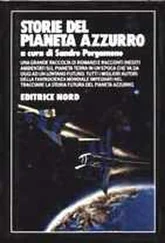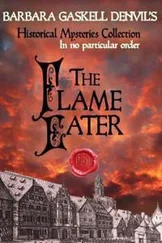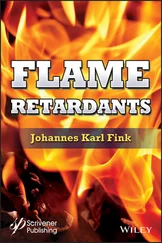3 Chapter 5Figure 5.1 Linear APP.Figure 5.2 Branched APP, n > 1000.Figure 5.3 Reaction scheme for intumescence and char formation by APP.Figure 5.4 UL 94 testing with APP flame retarded polypropylene (left).Figure 5.5 Dependency of LOI on loading level of Exolit ®AP 760 in polypropylene...Figure 5.6 Smoke density (D S) of burning PP (V-0, 1.6 mm) with different flame r...Figure 5.7 Heat release rate and rate of smoke release of polyurethane foam with...Scheme 5.1 Reaction between melamine and toluene diisocyanate.Figure 5.8 Thermogravimetric analysis of melamine and some of its salts.Figure 5.9 Structure of melamine cyanurate.Figure 5.10 UL94 V0 test of polyamide containing 6% MC during first and second a...Figure 5.11 Structure of melamine phosphates.Figure 5.12 Polyamide compound with MPP under UL94 V test conditions.Figure 5.13 Concentration of MPP to get UL94 V-0 in PA66 depending on the glass ...Figure 5.14 Metal modified MPP products by Floridienne Chimie (Safire ®400, Safi...Scheme 5.2 Melamine and its condensation products.Figure 5.15 Hindered N-alkoxy amine stabilizer Flamestab ®NOR ®116.Figure 5.16 Polypropylene film samples with and without NOR-116 after burning in...Scheme 5.3 Mode of action of N-alkoxy hindered amines.Figure 5.17 Cyclic spirophosphonate used as synergist for N-alkoxy hindered amin...Figure 5.18 Thermogravimetric analysis of various phosphazenes.Figure 5.19 TGA of phospham, PON and mixtures with PBT.Figure 5.20 Polymer of piperazine and cyanuric acid as described by MCA Technolo...Figure 5.21 Heat release rate and smoke release of polypropylene with 10% and 20...
4 Chapter 6Figure 6.1 Carbon vs. silicon chemistry.Figure 6.2 Schematic representation of catalysis charring mechanism of PP/clay n...Figure 6.3 Heat release rate of polystyrene modified with Dow Corning RM 4-7081 ...Figure 6.4 Char formation in PC incorporated with silicone.Figure 6.5 Char formation in PC incorporated with silicone [110].
5 Chapter 7Figure 7.1 Schematic illustration of a) graphene, b) graphene oxide (GO), c) red...Figure 7.2 Chitosan.Figure 7.3 Phytic acid.Figure 7.4 Molecular structure of Firebrake ®ZB (zinc borate) (zinc ions complexi...Figure 7.5 SEM of an IM7 carbon fiber after 20 min thermal treatment at 600 °C (...Figure 7.6 Fiber diameter at the surface of the irradiated side of 2-mm thick RT...Figure 7.7 Melamine diborate.Figure 7.8 Hexagonal boron nitride lattice and nanosheet (on the right). (left s...Figure 7.9 Boron phosphate.Figure 7.10 Macromolecule prepared from p-formylphenylboronic acid, pentaerythri...
6 Chapter 8Figure 8.1 Schematic representation of: (a) heat and mass exchange at the surfac...Figure 8.2 Schematic representation of a single step and a multi step deposition...Figure 8.3 Characterization from ref [33] performed on CS/P-CNF LbL assembly: (a...Figure 8.4 Results from ref [56] describing cotton treated by PAH/SPS LbL assemb...Figure 8.5 Results from ref [63] describing cotton treated by BPEI/PSP-complexes...Figure 8.6 Results from ref [77] describing wool treated by PhA. SEM micrographs...Figure 8.7 Results from ref [86] describing cotton treated by BPEI/PhA LbL follo...Figure 8.8 Results from ref [90] describing cotton treated by APP/MMT nanocoatin...Figure 8.9 Results from ref [95] describing PET treated by Al2O3 coated SNP/SNP ...Figure 8.10 Results from ref [99] describing PET treated by BPEI/OSA LbL. HFST r...Figure 8.11 Results from ref [45] describing PET treated by PDAC/PAA/PDAC/APP Lb...Figure 8.12 Schematization of the procedure adopted in ref [112]. CH and MMT are...Figure 8.13 Results from ref [118] describing PET treated by BPEI/OSA LbL post c...Figure 8.14 Schematization and images of the lab-scale pilot plant employed in r...Figure 8.15 Schematization of the LbL deposition process of CS/P-CNF employed in...Figure 8.16 Results from ref [33] describing PU foams treated by CS/P-CNF LbL as...Figure 8.17 VFST results from ref [135] describing PU foams treated by pyrene-BP...Figure 8.18 Real scale during real scale chair mockup test results from ref [143...Figure 8.19 Burn-through fire test results of 8 BL CS/VMT coating from ref [145]...Figure 8.20 Flame penetration test results of 6 BL PDAC/GO 0.5 M coating from re...Figure 8.21 Cone calorimetry test results of a PAA+MMT/PDAC+BOH/APP+MMT coating ...Figure 8.22 Schematic representation of the procedure adopted to coat wood fiber...Figure 8.23 Flammability and cone calorimetry results of nanocellulose aerogels ...Figure 8.24 Schematic representation of the procedure adopted to LbL coat PU foa...Figure 8.25 Characterization from ref [178] investigating the penetration depth ...Figure 8.26 Characterization from ref [184] investigating the effects of cone ca...Figure 8.27 Characterization from ref [188] investigating the resistance to flam...Figure 8.28 Schematic representation of the procedure adopted in ref [191] to co...
7 Chapter 9Figure 9.1 Nonlinear dependence of the flame-retardancy effect on the concentrat...Figure 9.2 Synergy, an additional mechanism improves the efficiency so that the ...Figure 9.3 Fire residue design: Complex fire residue morphologies.
8 Chapter 10Figure 10.1 Periodic table of flame retardants.Figure 10.2 Metal + Polymer chelates.Figure 10.3 Metal complexes reported to have activity as FRs.Figure 10.4 General alkyne cross-linking mechanism.Figure 10.5 Alkyne containing flame retardants.Figure 10.6 Deoxybenzoin monomer.Figure 10.7 The Friedel-Crafts Reaction.Figure 10.8 Polycarbonate decomposition and char formation.Figure 10.9 Phytic acid.Figure 10.10 Examples of polymeric and reactive non-halogenated flame retardants...
1 Chapter 3 Table 3.1 Volumes and %-split of different flame retardant categories according ... Table 3.2 List of mineral filler flame retardants and their most important prope...Table 3.3 Typical product range of fine precipitated ATH.Table 3.4 Sketch of silane coating, most important functional groups and the pol...Table 3.5 Fine precipitated versus grinded and classified ATH (magnification of ...Table 3.6 Synthetic boehmite (AOH) and MDH of low to moderate compared with natu...Table 3.7 Comparison of metal hydrate solubility in battery acid (34 % H 2SO 4, D=...Table 3.8 Typical loading levels to fulfill UL94 V0 classification at 3.2mm and ...Table 3.9 Typical formulation and compound properties of LSFR-PVC compounds.Table 3.10 Mineral flame retardant use levels in PVC and other halogenated polym...Table 3.11 Overview on HFFR compounds regarding typical mineral flame retardant ...Table 3.12 Exemplary basic HFFR compound formulations based on PE/EVA and compou...Table 3.13 Exemplary basic HFFR compound formulations and properties based on TP...Table 3.14 Basic formulation band for PVC plastisol used for coated fabrics. ATH...Table 3.15 Starting formulation for conveyer belts.Table 3.16 Loading levels of ATH required in UP resins to fulfil the listed flam...Table 3.17 UL 94 testing results for epoxy novolac formulations filled with boeh...Table 3.18 Left: amine hardened epoxy cast resin satisfying UL94V0. Right: Dicya...
2 Chapter 4Table 4.1 Examples of components of intumescent systems.Table 4.2 Examples of intumescent compounds available on the market.
3 Chapter 5Table 5.1 NFPA 701 (1989) vertical burn test results in polypropylene compressio...Table 5.2 UL-94 V test results in polypropylene compression molded specimens.
4 Chapter 6Table 6.1 Effects of the incorporation of nanoclay on the thermal degradation pa...
5 Chapter 7Table 7.1 Major commercial boron-based flame retardants.Table 7.2 Flame retardant unreinforced polyamide [15].Table 7.3 Flame retardant of GF reinforced polyamide[15].
6 Chapter 8Table 8.1 Main FR conformal coating solutions for natural fabrics.Table 8.2 Main FR conformal coating solutions for synthetic fabrics.Table 8.3 Main FR conformal coating solutions for blend fabrics.Table 8.4 Main FR conformal coating solutions for PU foams.
Читать дальше












